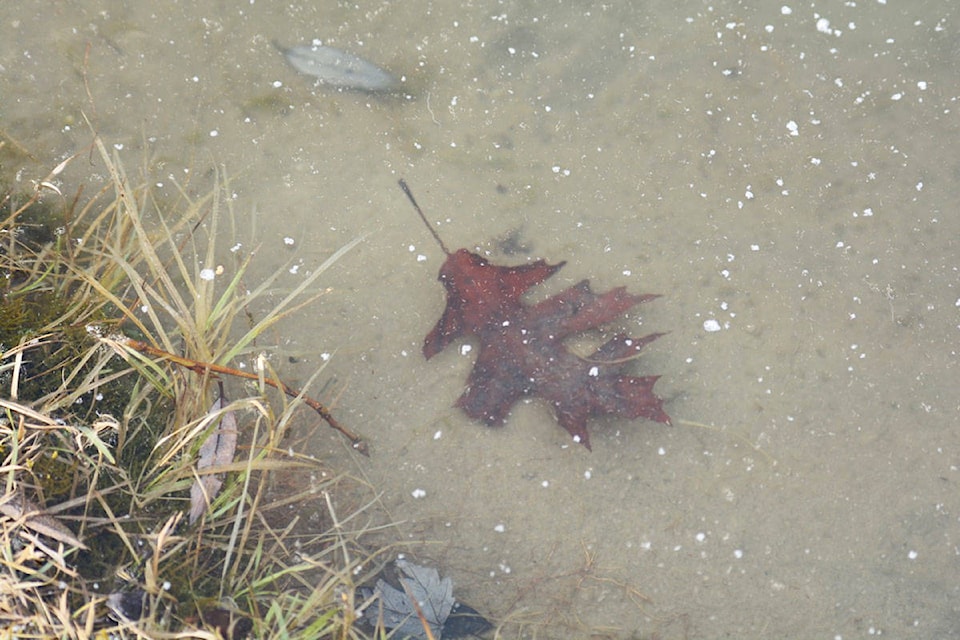A leaf is perfectly preserved under the ice on a small pond at West Fraser Timber Park.
Residents are reminded that even though the ice may look inviting to walk on, please be very cautious when enjoying any winter outdoor activities around our local lakes.
According to the Canadian Red Cross, ice thickness should be 15 centimetres for walking or skating alone, 20 centimetres for skating parties or games and 25 centimetres for snowmobiles.
Ice colour may be an indication of its strength. Clear blue ice is strongest; white opaque or snow ice is half as strong; and grey ice is unsafe.
Red Cross offers these tips if you get in trouble on the ice.
If you get into trouble on ice and you’re by yourself:
- Call for help.
- Resist the immediate urge to climb back out where you fell in. The ice is weak in this area.
- Use the air trapped in your clothing to get into a floating position on your stomach.
- Reach forward onto the broken ice without pushing down. Kick your legs to push your torso on the ice.
- When you are back on the ice, crawl on your stomach or roll away from the open area with your arms and legs spread out as far as possible to evenly distribute your body weight. Do not stand up! Look for shore and make sure you are going in the right direction.
When you are with others:
- Rescuing another person from ice can be dangerous. The safest way to perform a rescue is from shore.
- Call for help. Consider whether you can quickly get help from trained professionals (police, fire fighters or ambulance) or bystanders.
- Check if you can reach the person using a long pole or branch from shore – if so, lie down and extend the pole to the person.
- If you go onto ice, wear a PFD and carry a long pole or branch to test the ice in front of you. Bring something to reach or throw to the person (e.g. pole, weighted rope, line or tree branch).
- When near the break, lie down to distribute your weight and slowly crawl toward the hole.
- Remaining low, extend or throw your emergency rescue device (pole, rope, line or branch) to the person.
- Have the person kick while you pull them out.
- Move the person to a safe position on shore or where you are sure the ice is thick. Signal for help.
READ MORE: Cariboo ice fishers net over $3,000 in fines for overfishing
